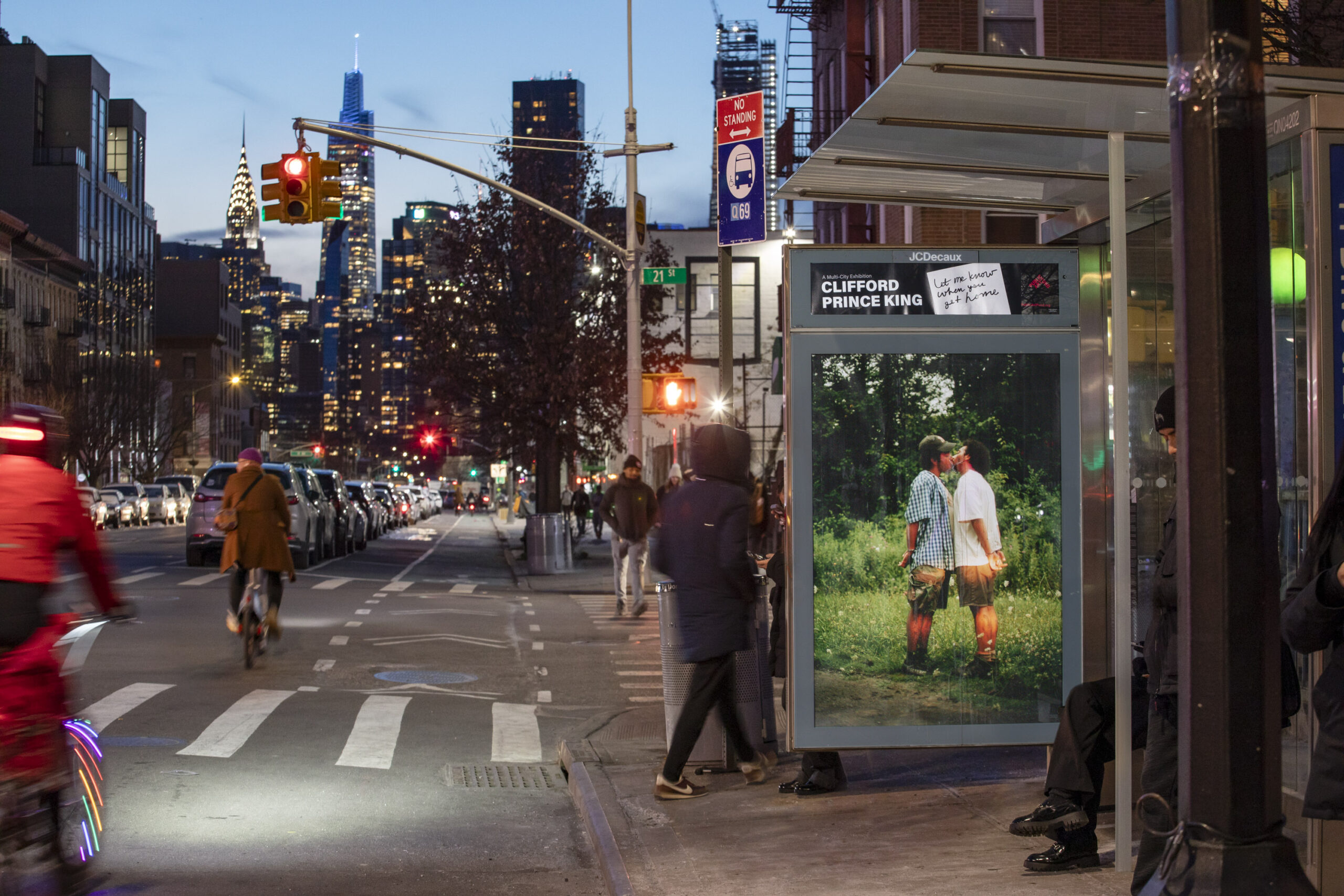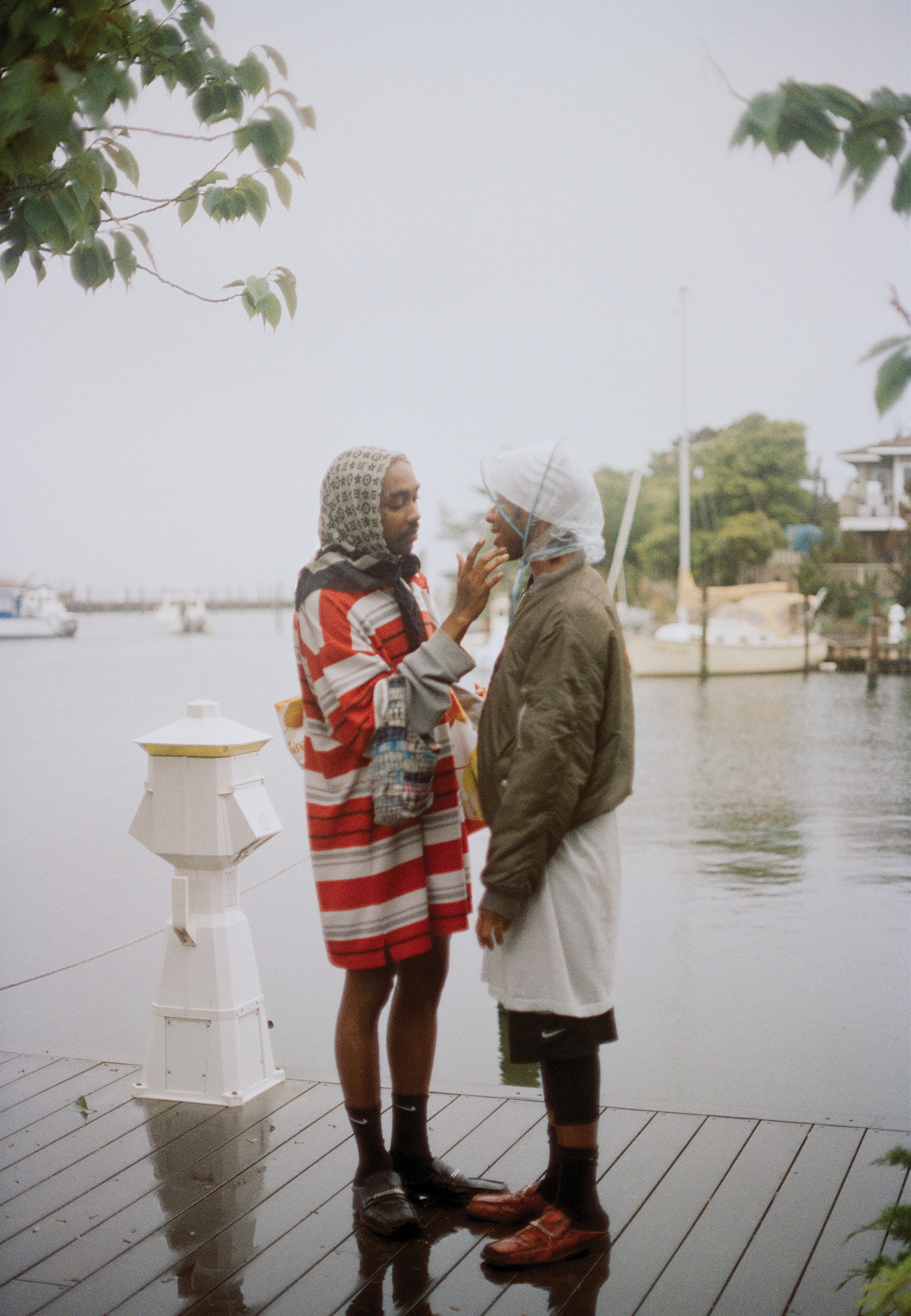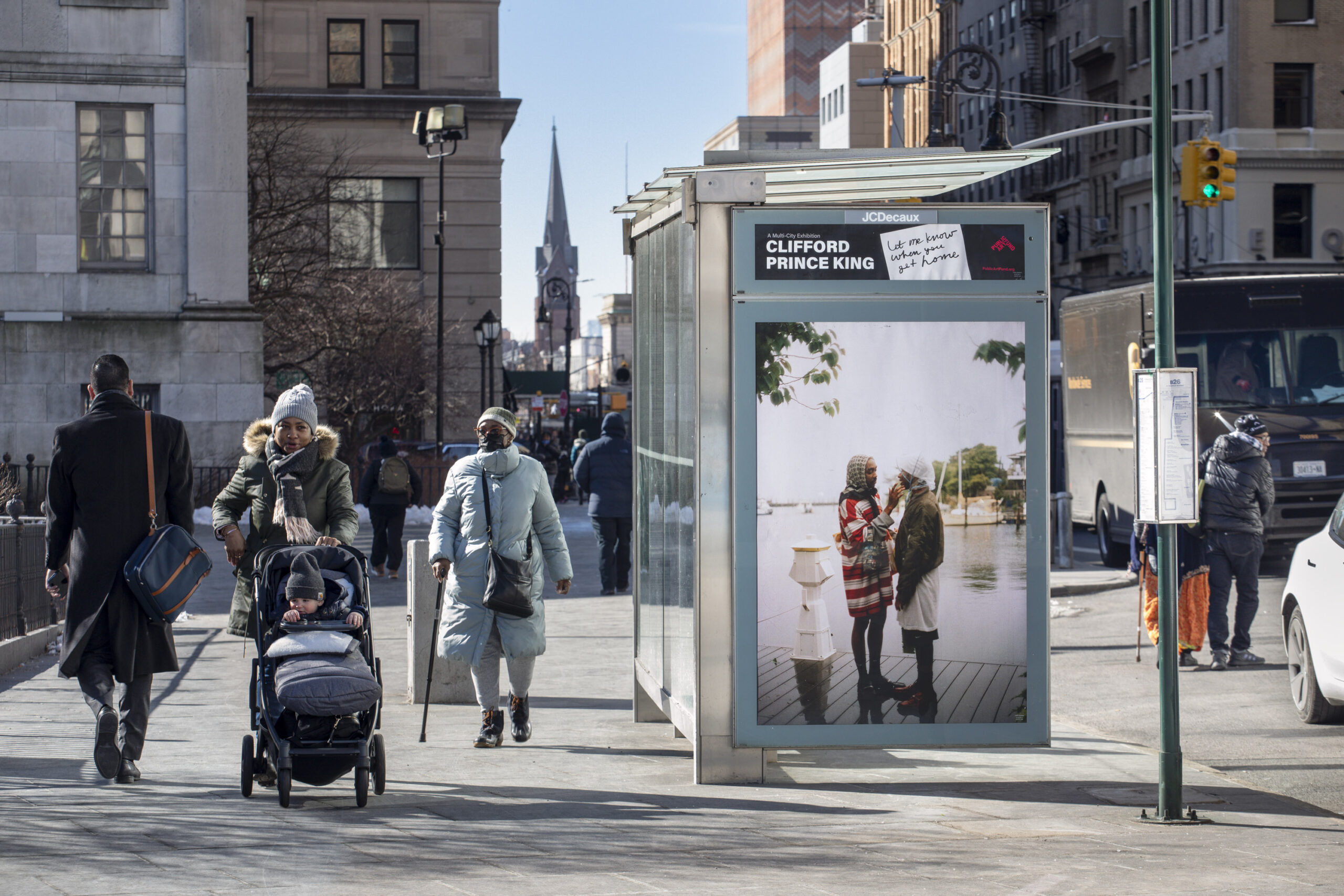
Clifford Prince King prefers art to cross his path. “There is power in a work of art presenting itself to me in a natural way,” he says. “There is a bigger impact on seeing something when you are not looking for it as opposed to going into a space where the presentation can be overwhelming.”
Between street vendors with grilled plantains and sliced mangoes on offer and school kids gushing into the park after the 3 p.m. bell, Brooklyn’s Bed-Stuy neighbourhood is where the artist currently lets passersby stumble his photographs. On an incredibly warm mid-March afternoon, King is heading towards one of eleven photographs that are all currently on view at bus shelters and newsstands across five New York City boroughs, as well as Chicago and Boston. The exhibition, titled Let me know when you get home, is the newest iteration in Public Art Funds’s collaboration with JCDecaux to inject art into the boards reserved for advertisement. The seamless penetration of photography into the hustle and bustle of the urban mayhem is the kind that King likes to encounter art with: “I didn’t grow up going to galleries and museums, so this way of showing art really resonates with me.” By a line of public buses stuck in pre-rush hour traffic, King pauses to take a look at guilty of love, in which the artist is kissing another man amidst a lush natural plethora with both of their hands locked with handcuffs on their backs. A subtle blend of red and green lights, which recalls those over police cars, washes the subjects as the sharp summer sun blankets them with her own luminosity. King’s companion in the image is a Black queer person with whom he initially met on Instagram and serendipitously connected over Grindr during his residency at Light Work in Syracuse. The sudden isolation of spending a summer month in upstate New York prompted him to connect with other queer people of colour online. “Although these apps are associated with anonymous sex, they are also platforms to connect with whoever is around,” says King.

Growing up in Arizona and constantly travelling for his fine art photography practice and editorial commissions, the Brooklyn-based artist particularly considers these connections powerful in settings where existing as a Black queer person poses its threats. “We try to minimize ourselves to avoid conflict and for a sense of ease during transportation,” he explains. “This body of work is about allowing myself to be myself.” Besides upstate, the exhibition includes shots King captured in Fire Island during the BOFFO residency and Vermont for another residency called Eighth House, as well as São Paulo, where he had a two-week sojourn.
After creating in the last few years a portfolio of indoor imagery in which queer Black figures—mostly men—repose, kiss, contemplate, or have sex, the Public Art Fund project propelled King to carry his camera outside. “Exploring nature can be lonely, so a hyper sense of belonging is something I chase personally and sometimes desperately,” he admits. On the flip side of the same shelter is another image, titled the fear of letting go, showing another subject with a powdery pink flower in their mouth. Using an old elementary school cafeteria as his studio during his Light Works residency allowed King to work with an immense amount of natural light, transforming the large space. After a long session with the subject, which he also connected over Grindr, the two settled on the close-up shot, which stands at a busy bus stop on a monumental scale.


King has photographed public figures such as Daniel Kaluuya, Issa Rae, Jeremy O. Harris, Kelela, Kelvin Harrison Jr., and Jerrod Carmichael for the New York Times, Wall Street Journal, Interview, or Apartamento, as well as brands such as Calvin Klein, J.W. Anderson, and Airbnb. In his studio practice, his subjects in the past have included mainly non-professional models he had sexual experiences with—diverging from that type of connection with his posers in this body of work has created what he considers “a more soft and inviting element of safety.” Lens for King has been a “way to connect with people” since the beginning of his journey as a photographer, which he started without a formal education. He thrives on the opportunity to have non-professional models in front of his camera “because there are certain mannerisms and movements they do without being incredibly aware of them.”

In dj and ryan, two figures look at each other with compassion on a deck by the water; one gently touches the other’s cheek. The soaked wooden floor and the subjects’ layered attires hint at a recent downpour while the grey sky is alarming for another heavy rain. Between posing and being, the duo—just like the series’ other subjects—effortlessly delivers a fleeting moment, frozen in King’s romantic lens. Their intimacy is calmly carved in a hectic Brooklyn street corner, accompanying those waiting for their afternoon bus. Catching his audience in an idyllic liminal space between anticipation, boredom, and curiosity thrills King. “They are almost forced to share the space with art,” he says. “Art is inescapable, which I think is great!”
The exhibition remains on view at various JCDecaux bus shelters and newsstands in New York City, Chicago and Boston through May 26, 2024.
Written by Osman Can Yerebakan





